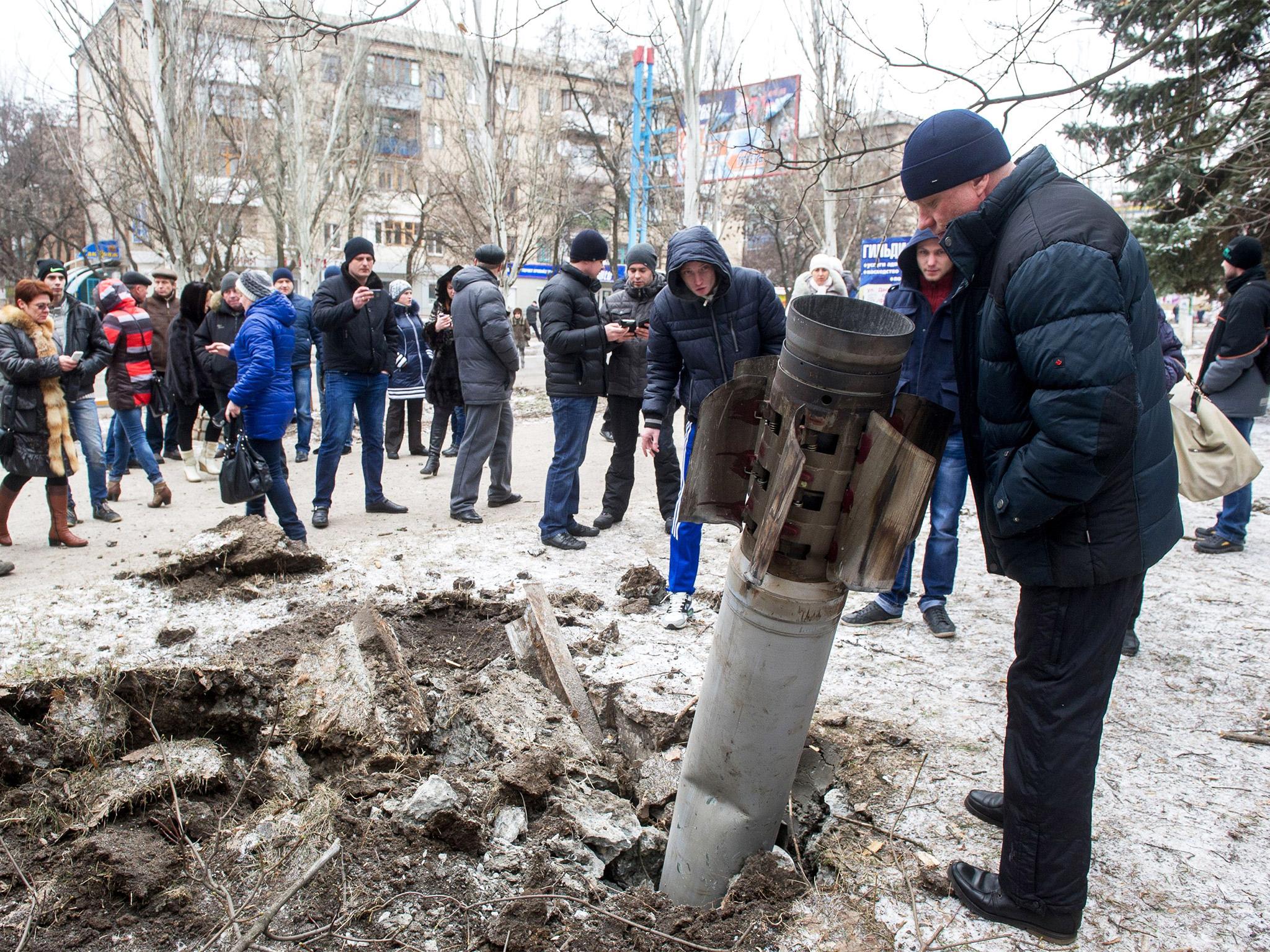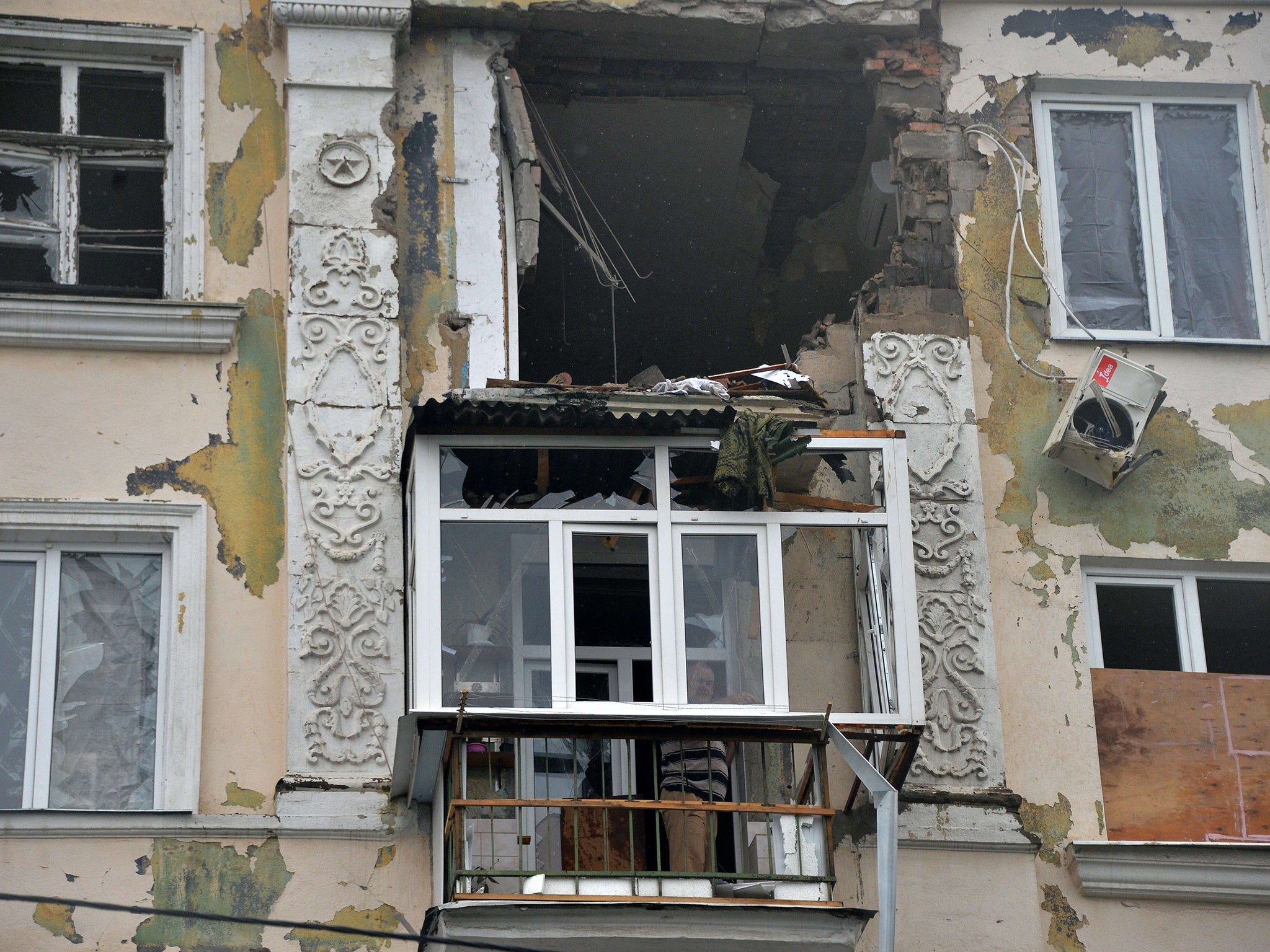Ukraine ceasefire: European leaders gather for talks, but locals in Kramatorsk are sceptical they can achieve peace
‘People can’t just ignore what happened... it’s going to be difficult to have peace,’ says one man who lost a friend in intense fighting two years ago

Your support helps us to tell the story
From reproductive rights to climate change to Big Tech, The Independent is on the ground when the story is developing. Whether it's investigating the financials of Elon Musk's pro-Trump PAC or producing our latest documentary, 'The A Word', which shines a light on the American women fighting for reproductive rights, we know how important it is to parse out the facts from the messaging.
At such a critical moment in US history, we need reporters on the ground. Your donation allows us to keep sending journalists to speak to both sides of the story.
The Independent is trusted by Americans across the entire political spectrum. And unlike many other quality news outlets, we choose not to lock Americans out of our reporting and analysis with paywalls. We believe quality journalism should be available to everyone, paid for by those who can afford it.
Your support makes all the difference.A flurry of diplomatic activity is under way following the latest upsurge in violence in Ukraine, with the French and German foreign ministers arriving in Kiev, followed by Boris Johnson, to hold urgent talks in an attempt to halt a slide back into a major conflict.
The separatist leader of the Donetsk Peoples Republic, Alexander Zakharchenko, has announced a ceasefire. Appearing on Russian television in a suit instead of his usual combat camouflage, he declared that the Minsk agreement of two years ago, which brought a ceasefire, was the “only solution”.
Frank-Walter Steinmeier, the German foreign minister, announced that Vladimir Putin is backing the ceasefire, which would initially last for a week. Jean-Marc Ayrault, of France, hoped the development would “see an opportunity for a new dynamic in the conflict”, including withdrawal of troops from the areas where the worst clashes had taken place.
But in Kramatorsk in the Donbas, the region which had experienced the worst of the fighting in the country’s civil war, there was scepticism that peace was about to break out. The belief, instead, was that that there would be more strife before a settlement of sorts is reached.
Kramatorsk and neighbouring Slovyansk were the flashpoints when the rebels took over a string of cities and towns two years ago, and then the scene of fierce combat when the forces of the Kiev government mounted an offensive to take them back.
Kramatorsk and Slovyansk are now under the control of the Kiev government and the situation, outwardly at least, is calm. In July this year “liberation” celebrations were held in both cities and there is strong civil and military Ukrainian presence.
But there have been a rising number of violent confrontations, including with the use of artillery, at various points in the Donbas. On Wednesday, with the ceasefire due to come into effect at midnight, the Ukrainian government accused the separatists of opening fire 46 times. The Donetsk People’s Republic, in turn, claimed that the Kiev forces have been carrying out “many provocations and attacks” in the course of the day.
The Organisation for Security and Co-operation in Europe (OSCE) monitors the ceasefire established under the Minsk agreement two years ago with a team of more than 700, with 583 of them based in the volatile east. One of its senior officials in the region held that “deep, deep distrust” between the two sides of the conflict was one of the main destabilising factors in agreements.
Serhiy, working as a mechanic in Kramatorsk, agreed. “These guys [the separatists] are Ukrainians, our fellow countrymen. But now they are with the Russians and talk about wanting to set up Novorossiya, they want to carve away a bit of our country. How can you trust people like that?”
I had met Serhiy in May 2004 when he was a member of a Ukrainian force which had blasted apart tankers the separatists had placed as defence barriers on the road into Kramatorsk. “At last we were taking offensive action, but overall at the time we had been slow to react against what was going on here. But in the last two years we have become much better trained and better armed, they will not find it so easy to take over this place now,” he wanted to stress. “I am not in the army any longer. But I am a reservist, trained, and I will do my duty if I am asked.”

The day before Serhiy and his colleagues were in action members of the Ukrainian airborne brigade and National Guard were involved in a stand-off at a bridge in the nearby village of Andrievka. My colleagues and I had met both sides during the day: the mood appeared to be tense but not violent.
But something went wrong that night. According to some accounts, soldiers began firing into the ground and people were hit by ricochets; the crowd attacked the troops and were shot. There were also claims that a separatist sniper had opened fire and started a free-for-all. I returned in the morning to find the troops had gone, some body parts, and a body were there, still to be removed. A resident, Aleksei Viktorovich, identified the dead man as Andrei Balotski. “We have contacted his family, but they can’t come because there is shooting in Kramatorsk and they are afraid to leave their homes”, he said.
Maksim, who knew Mr Balotski and was on the bridge on that lethal day two years ago, spoke about the legacy of violence. “People can’t just ignore what happened, they can’t just forget family members. So it’s going to be difficult to have peace. But we need it because this area is facing terrible problems.”
As international statesmen met in Kiev, the scale of the problem was highlighted in a United Nations report which condemned “continued disregard for the protection of civilians by both sides of the conflict” in the Donbas. The number of civilian casualties was back to the highs of last year, with 188 injured or killed. Investigators also found that 70 per cent of human rights abuse in a period of just four months involved torture, ill-treatment and illegal detention.
Join our commenting forum
Join thought-provoking conversations, follow other Independent readers and see their replies
Comments